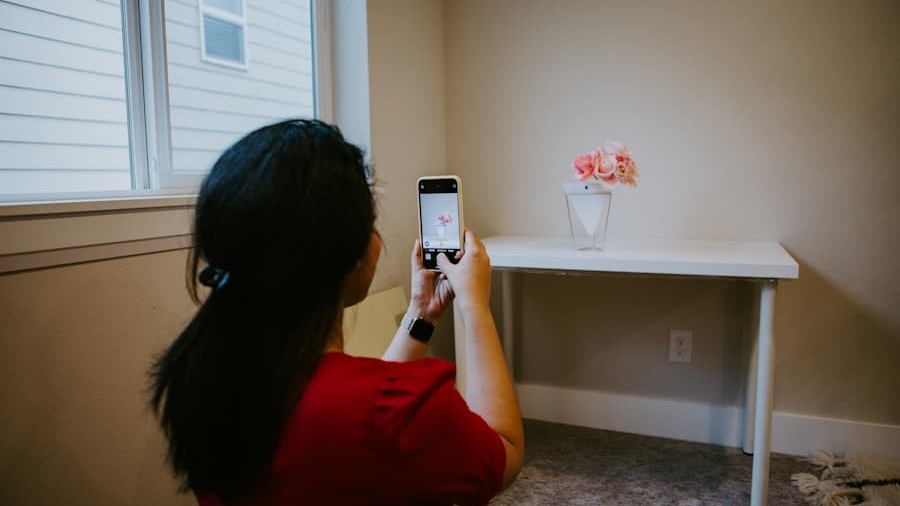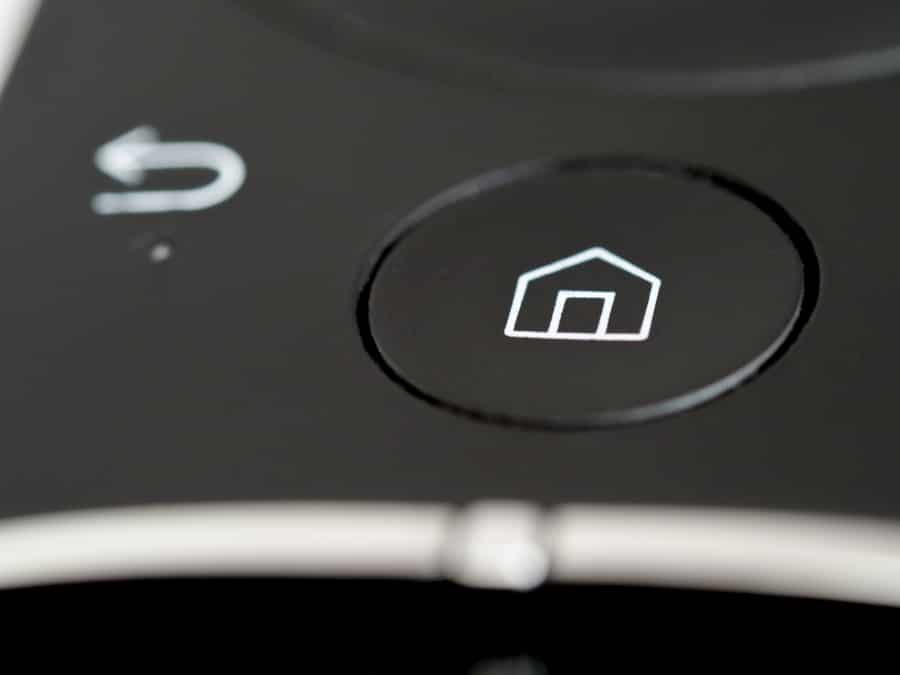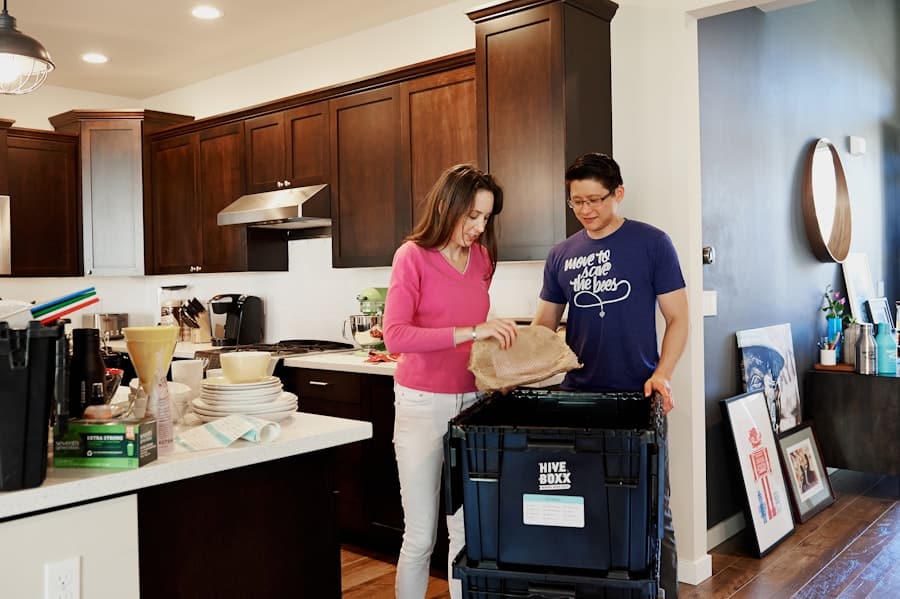The Internet of Things (IoT) has revolutionized the way we interact with our living spaces, ushering in an era of home automation that enhances convenience, efficiency, and security. IoT-enabled home automation refers to the integration of smart devices and systems that communicate with each other over the internet, allowing homeowners to control various aspects of their homes remotely or automatically. This technology has transformed traditional homes into smart homes, where everything from lighting to heating can be managed with a simple tap on a smartphone or through voice commands.
The rise of IoT has not only made life easier but has also paved the way for innovative solutions that address common household challenges. As the demand for smart home technology continues to grow, manufacturers are developing an array of devices designed to streamline daily tasks and improve overall quality of life. From smart thermostats that learn user preferences to intelligent security systems that provide real-time alerts, the possibilities are virtually limitless.
The integration of IoT in home automation is not merely a trend; it represents a fundamental shift in how we perceive and interact with our living environments. By harnessing the power of connectivity, homeowners can create a personalized ecosystem that caters to their unique needs and preferences.
Key Takeaways
- IoT-enabled home automation is revolutionizing the way we manage household tasks and chores.
- Smart appliances and devices are making it easier to streamline household chores and manage home systems effortlessly.
- Voice assistants play a crucial role in simplifying household tasks and making home management more convenient.
- IoT technology is automating cleaning and maintenance tasks, making it easier to keep the home clean and well-maintained.
- IoT-enabled home automation is enhancing security and safety, while also allowing for remote monitoring and control of home systems.
Streamlining Household Chores with IoT Devices
Automating Traditional Chores
Traditional chores such as vacuuming, laundry, and dishwashing can often feel overwhelming, especially for busy families or individuals juggling multiple responsibilities. However, with the advent of smart devices, these tasks can be automated or simplified, allowing homeowners to reclaim valuable time for more enjoyable activities.
Smart Devices for Efficient Cleaning
For instance, robotic vacuum cleaners equipped with advanced sensors and mapping technology can autonomously navigate through a home, efficiently cleaning floors without human intervention. These devices can be programmed to operate at specific times or controlled remotely via smartphone apps, ensuring that cleaning occurs even when residents are away. Similarly, smart washing machines can be programmed to start cycles at optimal times based on energy rates or user preferences, further reducing the burden of laundry day.
Reducing Time and Effort
By integrating these IoT devices into daily routines, households can experience a significant reduction in the time and effort required for chores.
Smart Appliances and Devices for Effortless Home Management
The landscape of home management has been transformed by the introduction of smart appliances and devices that enhance efficiency and convenience. These appliances are designed to communicate with one another and with users, creating a cohesive ecosystem that simplifies everyday tasks. For example, smart refrigerators can monitor food inventory, suggest recipes based on available ingredients, and even notify users when items are nearing expiration.
This level of interactivity not only helps reduce food waste but also encourages healthier eating habits by making meal planning easier. In addition to refrigerators, other smart appliances such as ovens, dishwashers, and coffee makers have also entered the market with innovative features. Smart ovens can be preheated remotely or programmed to cook meals according to specific recipes, ensuring perfect results every time.
Dishwashers equipped with IoT technology can optimize water usage based on load size and soil level, contributing to both environmental sustainability and cost savings on utility bills. The integration of these smart devices into home management systems allows for a seamless experience where users can monitor and control their appliances from anywhere, making household management more efficient than ever before.
The Role of Voice Assistants in Simplifying Household Tasks
Voice assistants have emerged as a central component of IoT-enabled home automation, providing users with a hands-free way to manage their homes. Devices such as Amazon Echo, Google Nest Hub, and Apple HomePod serve as hubs for controlling various smart devices through simple voice commands. This technology has made it possible for homeowners to perform tasks such as adjusting lighting, setting thermostats, or even locking doors without needing to physically interact with their devices.
The convenience offered by voice assistants extends beyond mere control; they also facilitate automation through routines and schedules. For example, users can create a morning routine that gradually brightens lights, starts the coffee maker, and reads the news aloud—all initiated by a single command. This level of integration not only simplifies daily tasks but also enhances the overall user experience by creating a more intuitive interaction with technology.
As voice recognition technology continues to improve, the potential for voice assistants in home automation will only expand, further simplifying household management.
Automating Cleaning and Maintenance with IoT Technology
Cleaning and maintenance are essential aspects of homeownership that can often be tedious and time-consuming. However, IoT technology has introduced innovative solutions that automate these processes, allowing homeowners to maintain their living spaces with minimal effort. Smart cleaning devices such as robotic mops and window cleaners have gained popularity for their ability to perform routine cleaning tasks autonomously.
Robotic mops work similarly to robotic vacuum cleaners but are designed specifically for hard floors. Equipped with sensors and mapping capabilities, these devices can navigate around furniture and obstacles while effectively mopping surfaces.
Additionally, smart irrigation systems can automate lawn care by adjusting watering schedules based on weather conditions or soil moisture levels, promoting healthy landscaping while conserving water. The integration of IoT technology into cleaning and maintenance routines not only saves time but also enhances the overall cleanliness and upkeep of homes. By automating these tasks, homeowners can focus on more meaningful activities while ensuring their living spaces remain inviting and well-maintained.
Enhancing Security and Safety through IoT-Enabled Home Automation
Advanced Monitoring Systems
Security is a paramount concern for homeowners, and IoT-enabled home automation has significantly enhanced safety measures through advanced monitoring systems. Smart security cameras equipped with motion detection capabilities can provide real-time alerts to homeowners when unusual activity is detected around their property. These cameras often feature two-way audio communication, allowing users to interact with visitors or potential intruders remotely.
Smart Doorbells and Locks
In addition to cameras, smart doorbells equipped with video capabilities enable homeowners to see who is at their door before opening it. This added layer of security not only deters potential threats but also provides peace of mind when away from home. Furthermore, smart locks allow users to control access to their homes remotely, granting entry to trusted individuals while keeping unauthorized visitors at bay.
Remote Monitoring and Automation
The ability to monitor security systems from anywhere via smartphone apps ensures that homeowners remain connected to their properties at all times. The integration of IoT technology into home security systems has transformed how we approach safety in our living environments. With features such as remote monitoring, real-time alerts, and automated responses to potential threats, homeowners can take proactive measures to protect their families and belongings.
Monitoring and Controlling Home Systems Remotely
One of the most compelling features of IoT-enabled home automation is the ability to monitor and control various home systems remotely. This capability allows homeowners to manage everything from heating and cooling systems to lighting and security from virtually anywhere in the world using their smartphones or tablets. For instance, smart thermostats enable users to adjust temperature settings while away from home, ensuring that energy consumption is optimized without sacrificing comfort.
Remote monitoring extends beyond climate control; it encompasses various aspects of home management as well. Smart lighting systems allow users to turn lights on or off remotely or set schedules for when lights should automatically activate or deactivate. This feature not only enhances convenience but also contributes to energy savings by preventing lights from being left on unnecessarily.
The ability to control home systems remotely empowers homeowners with greater flexibility and peace of mind. Whether checking on security cameras while on vacation or adjusting the thermostat during a long day at work, IoT technology ensures that users remain connected to their homes at all times.
The Future of IoT-Enabled Home Automation and Its Impact on Household Chores
As technology continues to evolve at an unprecedented pace, the future of IoT-enabled home automation holds immense potential for further transforming household chores and management practices. Innovations in artificial intelligence (AI) and machine learning are expected to enhance the capabilities of smart devices, enabling them to learn user preferences over time and adapt accordingly. For example, future smart appliances may anticipate user needs based on historical data, automatically adjusting settings for optimal performance without requiring manual input.
Moreover, advancements in connectivity technologies such as 5G will facilitate faster communication between devices, leading to more responsive and reliable home automation systems. This increased connectivity will enable even more sophisticated integrations between various devices within a smart home ecosystem. As a result, homeowners may find themselves relying on automated systems that seamlessly manage everything from energy consumption to security protocols without any intervention.
The impact of these advancements on household chores will be profound. As IoT technology continues to evolve, it will empower homeowners to delegate routine tasks entirely to automated systems while focusing on more meaningful pursuits. The future promises a world where household management is not just simplified but transformed into an effortless experience that enhances quality of life for individuals and families alike.
A related article to “How IoT-Enabled Home Automation Is Reducing Household Chores” can be found in the link The Best Tech Products of 2023. This article may provide insights into the latest technological advancements that are shaping the future of smart home automation systems. By staying informed about the best tech products, homeowners can make informed decisions about how to further streamline their household chores and improve their quality of life.
FAQs
What is IoT-enabled home automation?
IoT-enabled home automation refers to the use of Internet of Things (IoT) technology to automate and control household devices and systems, such as lighting, heating, air conditioning, security cameras, and appliances, through a network connection.
How does IoT-enabled home automation reduce household chores?
IoT-enabled home automation reduces household chores by allowing homeowners to remotely control and automate various tasks and devices, such as scheduling vacuuming or mopping robots, setting up automatic watering systems for plants, and controlling appliances and lighting to save time and effort.
What are some examples of IoT-enabled home automation devices?
Examples of IoT-enabled home automation devices include smart thermostats, smart lighting systems, smart locks, smart security cameras, robotic vacuum cleaners, smart kitchen appliances, and smart irrigation systems for gardens.
What are the benefits of IoT-enabled home automation for reducing household chores?
The benefits of IoT-enabled home automation for reducing household chores include saving time and effort, increasing convenience, improving energy efficiency, enhancing home security, and providing peace of mind through remote monitoring and control of household devices and systems.
How does IoT technology enable communication between home automation devices?
IoT technology enables communication between home automation devices through the use of sensors, actuators, and network connectivity, allowing devices to collect and exchange data, receive commands, and perform automated tasks based on predefined rules and user preferences.



